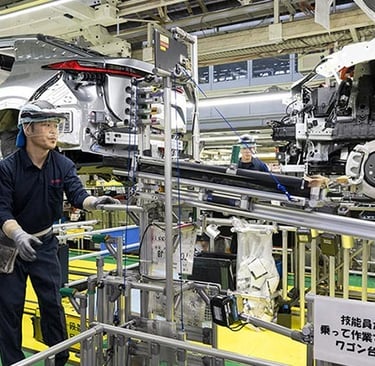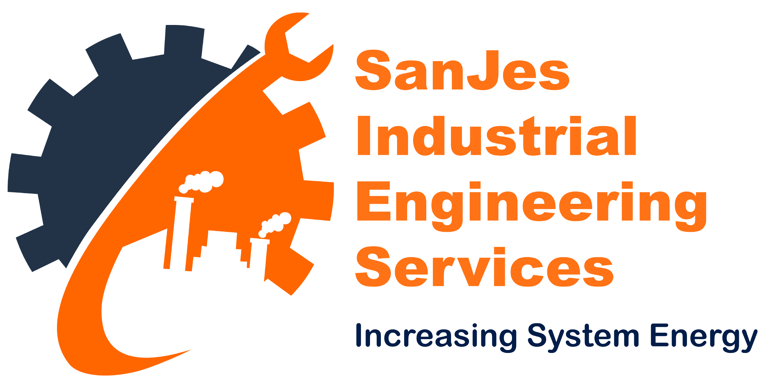Applying Thermodynamic Principles to Manufacturing and Facility Set-Up
3/15/20253 min read


In the dynamic field of manufacturing and facility management, organizations continually seek innovative methodologies to enhance efficiency, productivity, and innovation. One profound approach is to draw an analogy between the operational environment and the principles of thermodynamics. By comprehending and applying these principles, facility and manufacturing systems can uncover new insights and achieve substantial improvements.
Evaluating Social Energy
The concept of social energy pertains to the interactions and relationships among occupants, staff, and management within a facility. Analogous to a thermodynamic system where energy is transferred and transformed, social energy significantly influences workplace dynamics. Assessing these interactions aids in identifying areas for improvement, thereby fostering a more vibrant and cohesive environment.
Pinpointing Entropy Sources
In thermodynamics, entropy represents the measure of disorder or randomness within a system. Similarly, inefficiency, waste, and bureaucratic barriers within a manufacturing or facility environment can be seen as sources of entropy. Identifying these areas enables organizations to minimize or eliminate them, thus reducing entropy and creating a more streamlined and efficient operation.
Optimizing Facility Layouts
Designing facility layouts to reduce entropy and enhance social energy can lead to more efficient operations. Analogous to thermodynamic systems that seek equilibrium, an optimized layout promotes smoother workflows, enhances communication, and ultimately improves overall productivity.
Encouraging Innovation
Innovation is a driving force behind organizational progress and success. By fostering collaboration, creativity, and experimentation, facilities can increase social energy and reduce entropy. This cultivates an environment conducive to the emergence of novel ideas, resulting in innovative solutions and continuous improvement.
Thermodynamic Principles Applied
By applying thermodynamic principles to facility and manufacturing systems, organizations can derive new insights into optimizing efficiency, productivity, and innovation. This framework assists organizations in the following areas:
Improving decision-making: Evaluating the potential impact of choices on social energy, entropy, and overall system performance.
Enhancing collaboration: Fostering a culture of innovation, collaboration, and creativity.
Increasing productivity: Optimizing facility layouts, minimizing entropy, and maximizing social energy.
Driving innovation: Encouraging experimentation, risk-taking, and creativity.
The Analogy of Energy and Thermodynamic Principles
The analogy of energy in manufacturing and facility set-ups to thermodynamic energy can be encapsulated by the equation:
U = Q - W
where U represents the internal energy, Q is the heat added to the system, and W is the work done by the system. In a manufacturing context, internal energy can be seen as the total potential for productive output, heat added represents resources and investment, and work done symbolizes the actual productive work performed.
By analyzing this analogy, we understand that maximizing productive output (U) involves effective resource management (Q) and efficient work processes (W). The reduction in inefficiency (analogous to minimizing entropy) directly correlates to enhanced productivity and innovation.
Importance of Understanding Thermodynamic Principles
Understanding these principles is crucial as the world becomes increasingly complex and interconnected. This framework empowers organizations to anticipate changes, drive innovation, and maintain competitive advantage in a rapidly evolving landscape.
Applications in Machinery and Processes
The principles of thermodynamics can be applied directly to machinery and processes within a manufacturing or facility environment. For instance, machinery efficiency can be enhanced by reducing energy losses due to friction, heat dissipation, and wear and tear, analogous to minimizing entropy in a thermodynamic system. Process optimization can involve streamlining workflows, reducing bottlenecks, and eliminating redundant steps, all of which contribute to lower entropy and higher productivity.
By adopting these principles, organizations can make informed decisions about equipment maintenance, upgrades, and energy management. For example, regular maintenance schedules can prevent machinery breakdowns and ensure that energy transfer remains efficient, akin to maintaining low entropy in a thermodynamic system.
Suggestions for Improvement
To leverage the analogy theory for improvements in manufacturing or facility set-ups, consider the following suggestions:
Conduct Energy Audits: Regularly evaluate the energy consumption of machinery and processes to identify areas of inefficiency and potential optimization.
Implement Lean Principles: Adopt lean manufacturing techniques to minimize waste, reduce entropy, and enhance overall efficiency.
Encourage Collaborative Innovation: Foster an environment where employees can collaborate, share ideas, and experiment with new approaches to reduce entropy and boost social energy.
Optimize Facility Layouts: Design layouts that promote smooth workflows, minimize bottlenecks, and facilitate effective communication among staff.
Invest in Advanced Technologies: Utilize modern technologies such as automation, AI, and IoT to monitor and optimize energy usage, reducing entropy and increasing productivity.
Real-Life Examples Illustrating the Theory
One real-life example is Toyota's implementation of Lean Manufacturing principles, which significantly resemble thermodynamic principles. By reducing waste (entropy) and fostering a culture of continuous improvement (social energy), Toyota has achieved remarkable efficiency and innovation.
Another example is Google's office design strategy, which optimizes layouts to enhance employee interaction and collaboration, thereby increasing social energy and reducing entropy, resulting in higher productivity and innovation rates.
In conclusion, the analogy of life in manufacturing or facility set-ups with thermodynamic principles provides a powerful tool for achieving organizational goals. By harnessing this framework, organizations can unlock new levels of efficiency, productivity, and innovation, ensuring long-term success.
